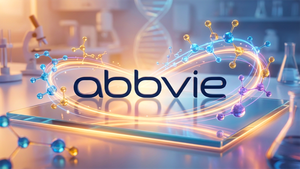With 51 patients enrolled, data from the long-term follow-up study (LTF-303) show that all patients treated with beti-cel who achieve transfusion independence (TI) remain free from transfusions, with the longest follow-up of seven years
Across Phase 3 studies, 89% (32/36) of evaluable patients across ages and genotypes achieved TI and remain transfusion free, including 91% (20/22) of evaluable pediatric patients under the age of 18
The absence of drug product-related adverse events beyond two years post-infusion supports a favorable long-term safety profile of beti-cel
Data from bluebird bio’s Phase 1/2 and Phase 3 clinical studies represent more than 220 patient-years of experience with beti-cel
bluebird bio, Inc. (Nasdaq: BLUE) today presented data from several studies of betibeglogene autotemcel (beti-cel) gene therapy (licensed as ZYNTEGLO™ in the EU and UK) in adult, adolescent and pediatric patients with transfusion-dependent β-thalassemia (TDT). These data were presented during EHA2021 Virtual, the 26th Annual Congress of the European Hematology Association, taking place June 9-17, 2021.
“Our maturing clinical data continue to deliver the results we had hoped for, with patients free from transfusions and maintaining strong hemoglobin levels over the course of years,” said Richard Colvin, M.D., Ph.D., VP, interim chief medical officer, bluebird bio. “TDT is usually diagnosed in the first two years of life, and patients with this disease will require regular blood transfusions for the rest of their lives – most as often as every few weeks. It is truly transformative for these patients and their families that they no longer need ongoing blood transfusions.”
TDT is a severe genetic disease caused by mutations in the β-globin gene that result in reduced or significantly reduced hemoglobin (Hb). In order to survive, people with TDT require chronic blood transfusions to maintain adequate Hb levels. These transfusions carry the risk of progressive multi-organ damage due to unavoidable iron overload.
Beti-cel is a one-time gene therapy that adds functional copies of a modified form of the β-globin gene (βA-T87Q-globin gene) into a patient’s own hematopoietic (blood) stem cells (HSCs). Once patients have the βA-T87Q-globin gene, they HSCs have the potential to produce HbAT87Q, which is gene therapy-derived adult Hb, at levels that can eliminate or significantly reduce the need for transfusions.
In studies of beti-cel, transfusion independence is defined as no longer needing red blood cell transfusions for at least 12 months while maintaining a weighted average Hb of at least 9 g/dL.
“Many of my patients, some of whom are very young, require transfusions every few weeks in order to survive,” said Evangelia Yannaki, M.D., Ph.D., Director, Gene and Cell Therapy Center, Hematology Department, George Papanikolaou Hospital, Thessaloniki, Greece. “While transfusions provide benefit, dependence on them carries complications such as iron overload and severely compromises their quality of life. The long-term beti-cel data presented at EHA are particularly encouraging, as markers of healthy red blood cell production and iron burden reduction improved among patients who achieved transfusion independence.”
As of the data cut-off of March 9, 2021, a total of 63 pediatric, adolescent and adult patients, including 19 patients with at least five years of follow-up, eight with at least six years and two with up to seven years across β0/β0 and non-β0/β0 genotypes and ages, have been treated with beti-cel in the Phase 1/2 HGB-204 (Northstar) and HGB-205 studies and the Phase 3 HGB-207 (Northstar-2) and HGB-212 (Northstar-3) studies. Data from bluebird bio’s Phase 1/2 and Phase 3 clinical studies represent more than 220 patient-years of experience with beti-cel.
Long-term follow-up study LTF-303
After participating in and completing the two years of follow-up in any of the Phase 1/2 or Phase 3 studies (HGB-207, HGB-212), patients treated with beti-cel were invited to enroll in a 13-year long-term follow-up study, LTF-303. As of March 9, 2021, 51 of 63 beti-cel-treated patients across age groups and genotypes spanning a broad range of TDT severity have completed two years of follow-up in the parent study and were enrolled in LTF-303 (22 treated in Phase 1/2 studies, 29 treated in Phase 3 studies) with a median post-infusion follow-up of 44.2 months (min-max: 22.9 – 86.5).
Of the 51 patients enrolled in LTF-303, 40 patients achieved transfusion independence (TI): 15/22 (68%) patients treated in Phase 1/2 and 25/29 (86%) patients treated in Phase 3. All patients achieved TI in the parent studies and maintained it through last follow-up in LTF-303.
As of the data cut-off date, all patients who achieved TI remained free from transfusions through their last follow-up (n=40). Phase 1/2 patients had a median duration of ongoing TI of 57.1 months (min-max: 15.8 – 84.1) and Phase 3 patients had a median ongoing TI duration of 26.3 months (min-max: 13.1 – 39.4).
Weighted average hemoglobin (Hb) in patients who achieved TI reached normal or near-normal levels in the Phase 1/2 studies (10.3 g/dL; min-max: 9.1 – 13.2) and in the Phase 3 studies (11.8 g/dL; min-max: 9.4 – 13.7).
Liver iron concentration (LIC) after infusion in patients who achieved TI decreased toward normal levels over time, particularly in patients with a high iron burden at baseline. Patients with severe (LIC >15 mg/g, n=5) and significant (LIC ≥7 – 15 mg/g, n=14) iron burden at baseline had a median reduction of 59% and 37%, respectively, from baseline to Month 48. At 48 months, assessments were available for 2/5 and 6/14 patients.
Prior to beti-cel infusion, all patients were on iron chelation, which is needed to reduce excess iron caused by chronic blood transfusions. Of the 40 patients who achieved TI following treatment with beti-cel, 73% (29/40) restarted iron chelation after beti-cel infusion and the majority (59%, 17/29) of patients who restarted iron chelation after infusion have since stopped; and 28% (11/40) were able to receive phlebotomy (blood removal), which is a preferred method for iron reduction. Of the 11 patients who were able to receive phlebotomy, 10 have not received phlebotomy in more than seven months and their total unsupported Hb at last study visit ranged from 10.5 to 14.0 g/dL.
There were no deaths, and no vector-derived replication-competent lentivirus nor events of insertional oncogenesis or malignancy have been reported in patients enrolled in LTF-303.
No drug-related adverse events (AEs) were reported in the long-term follow-up study. Serious AEs during LTF-303 unrelated to beti-cel included gonadotropic insufficiency, ectopic pregnancy, gall bladder wall thickening/polyp, bacteremia, neutropenia, cholelithiasis, diabetic ketoacidosis, pulmonary embolism, fetal death (as a result of a miscarriage) and major depression (n=1 for each).
Phase 3 Northstar-2 and Northstar-3 studies
As of March 9, 2021, 41 patients were treated in the Phase 3 studies HBG-207 (Northstar-2; n=23; median follow-up 24.3 months [min-max: 13.0 - 27.5]); and HGB-212 (Northstar-3; n=18; median follow-up 23 months [min-max: 4.1 – 26.8]).
Following treatment with beti-cel, 89% (32/36) of evaluable patients across ages and genotypes in both Phase 3 studies achieved transfusion independence (TI). As of the data cut-off date, these patients continue to be free of transfusions for a median duration of 25 months (min-max: 12.5 – 38.5), with median weighted average total hemoglobin levels during TI of 11.6 g/dL (min-max: 9.3 – 13.7).
Median gene therapy-derived hemoglobin (HbAT87Q) was stable approximately six months post-infusion: 8.8 g/dL at Month 6 (n=33); 9.2 g/dL at Month 9 (n=34); 8.7 g/dL at Month 12 (n=36); 9.3 g/dL at Month 18 (n=29); and 8.9 g/dL at Month 24 (n=26).
In exploratory analyses, biomarkers of ineffective erythropoiesis trended toward normal over time in patients who achieved TI, supporting the disease-modifying potential of beti-cel in patients with TDT; additionally, biomarkers of hemolysis normalized in patients who achieved TI.
The treatment regimen, comprising mobilization/apheresis, conditioning and beti-cel infusion, has a safety profile consistent with the known effects of mobilization with G-CSF and plerixafor and myeloablation with single-agent busulfan.
Grade ≥3 veno-occlusive liver disease in three patients was attributed to busulfan conditioning and resolved with defibrotide treatment. One patient developed serious, Grade 3 congestive heart failure unrelated to drug product, which was downgraded to Grade 1 at 5 months and resolved at 12 months.
Adverse events (AEs) considered related or possibly related to the drug product included thrombocytopenia (n=3), abdominal pain (n=3), leukopenia (n=1), neutropenia (n=1), pain in extremity (n=1), tachycardia (n=1) and autoimmune disorder (n=1).
Post-infusion non-hematologic Grade ≥3 AEs in ≥3 patients in either study unrelated to beti-cel included oropharyngeal inflammation (n=29), febrile neutropenia (n=20), epistaxis (n=8), decreased appetite (n=6), pyrexia (n=5), alanine aminotransferase increase (n=5) and veno-occlusive liver disease (n=3). There were no deaths, no graft failures or graft-versus-host disease (GVHD), and no cases of replication-competent lentivirus, insertional oncogenesis, clonal predominance, or malignancy.
Phase 3 pediatric patients
As of March 9, 2021, 27 pediatric patients (<12 years: n=16; ≥12 to <18 years: n=11) were treated in the Phase 3 HGB-207 (Northstar-2) and HGB-212 (Northstar-3) studies and had a median follow-up of 25.5 months (min-max: 4.1 – 41.5 months).
Following treatment with beti-cel, 91% (20/22) of evaluable patients under the age of 18 years (ages 4 to 17), including 10 patients under age 12, achieved transfusion independence (TI). These patients continue to be free of transfusions through their last follow-up, with median weighted average Hb levels during TI of 10.0 g/dL in patients under age 12 (n=10) and 11.7 g/dL in patients age 12-18 (n=10).
The median baseline score for 18 patients who achieved TI was 79.90 (range, 47.83-97.83; n=18) on the PedsQL-4.0; healthy children reach scores of approximately 84. At 24 months, improvement in quality of life was approximately three-fold higher than the minimal clinically significant meaningful difference (MCMD, a change between 4.30 and 4.83 points) as measured by the PedsQL-4.0. Improvements were more pronounced in patients with more severe scores at baseline, showing greater than five-fold higher improvements over the MCMD.
Adverse events (AEs) in pediatric patients during the HGB-207 and HGB-212 trials that were considered related or possibly related to beti-cel were non-serious and included tachycardia (Grade 1, n=1) and abdominal pain (Grade 1, n=2) on the day of infusion, and Grade 3 thrombocytopenia in one patient post-infusion.
There were no deaths, no graft failures or GVHD, and no cases of replication-competent lentivirus or insertional oncogenesis. No clonal predominance has been observed.
Grade 4 veno-occlusive liver disease occurred in two patients (ages ≥12 to <18 years) and one Grade 2 event occurred in a patient age <12 years; all events resolved after treatment with defibrotide.
Post-infusion non-hematologic Grade ≥3 AEs in ≥2 patients <18 years of age (n=27) unrelated to beti-cel included stomatitis (n=15), febrile neutropenia (n=15), epistaxis (n=6), decreased appetite (n=5), alanine aminotransferase increase (n=3), hypoxia (n=3), pyrexia (n=3), pharyngeal inflammation (n=3), mucosal inflammation (n=3), veno-occlusive disease (n=2) and dyspepsia (n=2).
The presentations are now available on demand on the EHA2021 conference website:
Oral Presentation [S257]: Betibeglogene autotemcel Gene Therapy for the Treatment of Transfusion-Dependent β-Thalassemia: Updated Long-Term Efficacy and Safety Results
Presenting Author: Dr. Evangelia Yannaki, Director, Gene and Cell Therapy Center, Hematology Department, George Papanikolaou Hospital, Thessaloniki, Greece
Session Title: Cellular Immunotherapy and Gene Therapy – Clinical
Date & Time: Available on Demand, Friday, June 11; 9:00 a.m. CEST/3:00 a.m. EDT; Live Q&A Session
Oral Presentation [S266]: Betibeglogene autotemcel in Patients With Transfusion-Dependent β-Thalassemia: Updated Results From HGB-207 (Northstar-2) and HGB-212 (Northstar-3)
Presenting Author: Professor Franco Locatelli, Director, Department of Pediatric Hematology and Oncology, Ospedale Pediatrico Bambino Gesù, Rome, Italy
Session Title: Changing the Scene on Thalassemias
Date & Time: Available on Demand, Friday, June 11; 9:00 a.m. CEST/3:00 a.m. EDT; Live Q&A Session
ePoster [EP1301]: Interim Results of Betibeglogene autotemcel Gene Therapy in Pediatric Patients with Transfusion-Dependent β-thalassemia (TDT) Treated in the Phase 3 Northstar-2 (HGB-207) and Northstar-3 (HGB-212) Studies
Presenting Author: Dr. Andreas E. Kulozik, Chairman, Department of Pediatric Oncology, Hematology and Immunology, and Director, Hopp Children's Cancer Center, University of Heidelberg, Heidelberg, Germany
About betibeglogene autotemcel (beti-cel)
Betibeglogene autotemcel (beti-cel) is a one-time gene therapy that adds functional copies of a modified form of the β-globin gene (βA-T87Q-globin gene) into a patient’s own hematopoietic (blood) stem cells (HSCs). Once a patient has the βA-T87Q-globin gene, they have the potential to produce HbAT87Q, which is gene therapy-derived adult hemoglobin (Hb), at levels that may eliminate or significantly reduce the need for transfusions. In studies of beti-cel, transfusion independence (TI) is defined as no longer needing red blood cell transfusions for at least 12 months while maintaining a weighted average Hb of at least 9 g/dL.
beti-cel is manufactured using the BB305 lentiviral vector (LVV), a third-generation, self-inactivating LVV. The promoter, a regulatory element of the LVV that controls the expression of the transgene, selected for BB305 is a cellular (non-viral) promoter that drives gene expression only in the erythroid lineage cells (red blood cells and their precursors).
The European Commission granted conditional marketing authorization (CMA) for beti-cel, marketed as ZYNTEGLO™ gene therapy, for patients 12 years and older with TDT who do not have a β0/β0 genotype, for whom hematopoietic stem cell (HSC) transplantation is appropriate, but a human leukocyte antigen (HLA)-matched related HSC donor is not available. Non-serious adverse events (AEs) observed during clinical studies that were attributed to beti-cel included abdominal pain, thrombocytopenia, leukopenia, neutropenia, hot flush, dyspnea, pain in extremity, tachycardia and non-cardiac chest pain. One serious adverse event (SAE) of thrombocytopenia was considered possibly related to beti-cel.
Additional AEs observed in clinical studies were consistent with the known side effects of HSC collection and bone marrow ablation with busulfan, including SAEs of veno-occlusive disease. For details, please see the Summary of Product Characteristics (SmPC).
On April 28, 2020, the EMA renewed the CMA for beti-cel. The CMA for beti-cel is valid in the 27 member states of the EU as well as the UK, Iceland, Liechtenstein and Norway. In November 2020, bluebird bio submitted to the EMA an application for the second renewal of the CMA. This procedure is currently on hold while the EMA's Pharmacovigilance Risk Assessment Committee (PRAC) reviews the safety of ZYNTEGLO. The CMA is valid while the renewal application review is ongoing by the regulatory agency.
The FDA granted beti-cel Orphan Drug status and Breakthrough Therapy designation for the treatment of TDT.
bluebird bio is on track to complete its rolling Biologics License Application (BLA) submission to the FDA for beti-cel in mid-2021. This submission is anticipated to include adults, adolescents and children with transfusion dependent β-thalassemia across all genotypes (including non-β0/β0 genotypes and β0/β0 genotypes). Beti-cel is not approved in the U.S.
Beti-cel continues to be evaluated in the ongoing Phase 3 Northstar-2 (HGB-207) and Northstar-3 (HGB-212) studies. bluebird bio is conducting a long-term safety and efficacy follow-up study, LTF-303, for people who have participated in bluebird bio-sponsored clinical studies of beti-cel.
About bluebird bio, Inc.
bluebird bio is pioneering gene therapy with purpose. From our Cambridge, Mass., headquarters, we’re developing gene and cell therapies for severe genetic diseases and cancer, with the goal that people facing potentially fatal conditions with limited treatment options can live their lives fully. Beyond our labs, we’re working to positively disrupt the healthcare system to create access, transparency and education so that gene therapy can become available to all those who can benefit.
bluebird bio is a human company powered by human stories. We’re putting our care and expertise to work across a spectrum of disorders including cerebral adrenoleukodystrophy, sickle cell disease, β-thalassemia and multiple myeloma using three gene therapy technologies: gene addition, cell therapy and (megaTAL-enabled) gene editing.
bluebird bio has additional nests in Seattle, Wash.; Durham, N.C.; and Zug, Switzerland. For more information, visit bluebirdbio.com.
Follow bluebird bio on social media: @bluebirdbio, LinkedIn, Instagram and YouTube.
ZYNTEGLO and bluebird bio are trademarks of bluebird bio, Inc.
bluebird bio Cautionary Statement Regarding Forward-Looking Statements
This press release contains “forward-looking statements” within the meaning of the Private Securities Litigation Reform Act of 1995. All statements that are not statements of historical facts are, or may be deemed to be, forward-looking statements. Such forward-looking statements are based on historical performance and current expectations and projections about our future financial results, goals, plans and objectives and involve inherent risks, assumptions and uncertainties, including internal or external factors that could delay, divert or change any of them in the next several years, that are difficult to predict, may be beyond our control and could cause our future financial results, goals, plans and objectives to differ materially from those expressed in, or implied by, the statements. No forward-looking statement can be guaranteed. Forward-looking statements in this press release should be evaluated together with the many risks and uncertainties that affect bluebird bio’s business, particularly those identified in the risk factors discussion in bluebird bio’s Annual Report on Form 10-K, as updated by our subsequent Quarterly Reports on Form 10-Q, Current Reports on Form 8-K and other filings with the Securities and Exchange Commission. These risks and uncertainties include, but are not limited to: the risk that the efficacy and safety results from our prior and ongoing clinical trials will not continue or be repeated in our ongoing or planned clinical trials; the risk that the current or planned clinical trials of our product candidates will be insufficient to support regulatory submissions or marketing approval in the United States, or for a broader indication in the European Union; the risk that regulatory authorities will require additional information regarding our product candidates, resulting in delay to our anticipated timelines for regulatory submissions, including our applications for marketing approval; and the risk that any one or more of our product candidates, will not be successfully developed, approved or commercialized. The forward-looking statements included in this document are made only as of the date of this document and except as otherwise required by applicable law, bluebird bio undertakes no obligation to publicly update or revise any forward-looking statement, whether as a result of new information, future events, changed circumstances or otherwise.
View source version on businesswire.com: https://www.businesswire.com/news/home/20210611005081/en/
Contacts
Investors:
Elizabeth Pingpank, 617-914-8736
epingpank@bluebirdbio.com
Media:
Victoria von Rinteln, 617-914-8774
vvonrinteln@bluebirdbio.com




